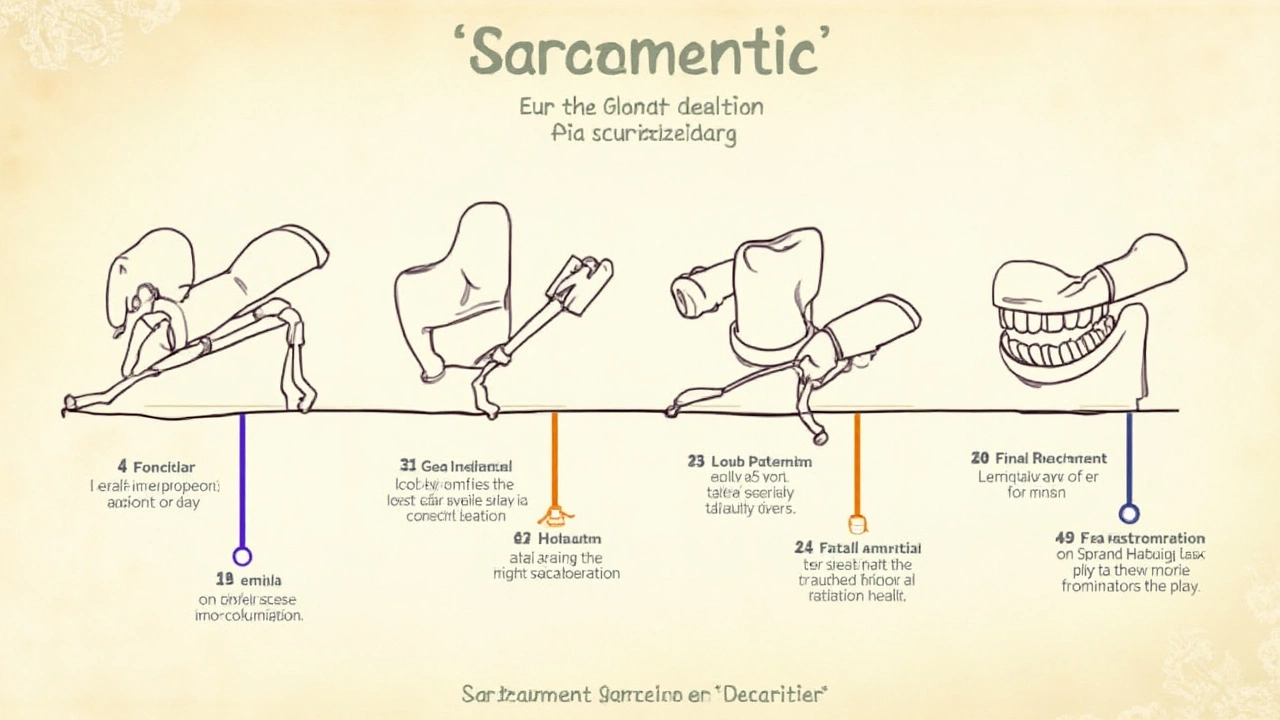- Home
- Dental Health
- Understanding the Time Involved in Dental Implant Procedures

Understanding the Time Involved in Dental Implant Procedures
Embarking on the journey to getting a dental implant can be exciting yet filled with curiosity about how long the process takes. Dental implants are a modern marvel in dentistry, offering a durable and natural-looking solution for missing teeth. Yet, behind the scenes, the intricacies of timing play a crucial role in ensuring a successful outcome.
Several factors influence the timeline, from initial consultations to the bone's healing around the implant. Whether you are considering an implant for the first time or are curious about what someone else is experiencing, understanding the steps can demystify the process. Let’s dive into what each stage involves so you can feel prepared and informed when discussing your dental implant options with your dentist.
- Introduction to Dental Implants
- Initial Consultation and Planning
- Preparation and Bone Grafting
- Placement of the Implant
- Healing and Osseointegration
- Fitting the Crown and Final Steps
Introduction to Dental Implants
Dental implants have fundamentally transformed the field of dentistry, offering a compelling alternative to bridges and dentures. These implants are essentially artificial tooth roots, forged from titanium, which become a supportive base for fixed or removable replacement teeth designed to blend with one's natural smile. The brilliance of dental implants lies in their ability to mimic the natural structure of teeth, providing both functionality and aesthetics. Unlike traditional dentures, which can sometimes slip or cause discomfort, implants are designed to fuse with your jawbone over time, ensuring stability and durability.
Historically, the inception of dental implants can be traced back to the mid-20th century when breakthroughs in biointegration revolutionized oral care. Today, their popularity has soared, with millions of procedures performed annually. Health experts often laud this innovation for its significant impact on enhancing quality of life for individuals missing one or more teeth. The American Academy of Implant Dentistry states that more than 3 million people in the United States have implants, a figure that continues to grow as awareness increases. This growth isn't just a testament to their effectiveness but also to the advanced surgical techniques and materials used.
What makes dental implants stand out is their resilience and longevity. With proper care, these implants can last a lifetime, making them a cost-effective solution in the long term. A well-maintained implant doesn't just restore the function of chewing and speaking but also helps maintain the facial structure, preventing the bone loss that often follows tooth loss. They're essentially a modern solution for those seeking not just a tooth replacement, but a lasting solution that integrates seamlessly with oral health and hygiene. According to a dental implant expert from the Mayo Clinic, the success rate of implants can reach up to 98%, a statistic that underscores their reliability.
The versatility of dental implants is another noteworthy aspect. They cater to various restoration options — from single tooth replacement and multiple teeth replacement to denture support. This adaptability ensures that no matter the dental need, there is a suitable implant solution. While many fear the surgical nature of this procedure, advancements in dental technology mean that procedures are more precise, with minimized discomfort and recovery time.
However, it's essential for potential candidates to undergo thorough evaluations. Factors such as the quantity and quality of the jawbone, general health, and oral hygiene practices play significant roles in determining the candidacy for an implant. A comprehensive dental examination will involve X-rays and possibly 3D images, offering a detailed look at the areas where implants will be fitted. Pre-procedural planning is crucial to ensure success and minimize complications. The process, while detailed and strategic, underscores the importance of customized care, paving the way for a truly personalized dental restoration experience.
Initial Consultation and Planning
The journey to a successful dental implant begins with the initial consultation and planning stage, which is arguably one of the most crucial phases. It's during this time that your dentist will evaluate your overall oral health and determine if you are a suitable candidate for a dental implant. This involves a comprehensive examination, where the dentist will assess the condition of your gums and jawbone. They may take X-rays or 3D images to get a more accurate understanding of your oral structure. These diagnostic tools are indispensable as they help visualize the exact positioning of the implant, ensuring that it aligns perfectly with your natural teeth.
At this appointment, you'll discuss your dental history and any concerns you might have, allowing you to set realistic expectations about the procedure. Many dental professionals stress the importance of understanding what patients are hoping to achieve with their implants. This is vital because the implants must match both the aesthetics and function of natural teeth. According to Dr. John T. McKay, a renowned dental surgeon, "A successful implant begins long before the actual procedure; it starts with understanding the patient's vision and executing it with precision."
This phase is not only about preparing your mouth for the implant but also about financial and logistical planning. Dental implants can be a significant investment, so it's crucial to discuss the costs involved and formulate a payment plan if needed. Some clinics offer digital smile previews to show how your new smile might look, which can be incredibly reassuring for patients on the fence. This preparation is not just about paperwork and images; it's about setting the groundwork for a successful outcome.
Once all preliminary assessments are complete and you’ve been deemed a candidate, your dentist will craft a tailored treatment plan that maps out the entire timeline from start to finish. This plan includes the timing of each visit and what to expect at each stage. Planning typically involves coordinating with other dental specialists if further treatments are necessary, such as extractions or bone grafts, which are part of preparation for those with insufficient bone density.
The duration of this stage varies depending on individual circumstances, but it typically spans anywhere from a few days to several weeks. Some patients may need additional procedures, like bone augmentations, which will extend this part of the process. The key takeaway from this stage is that thorough planning paves the way for minimal complications and maximizes the longevity and functionality of the implant.

Preparation and Bone Grafting
The journey towards successful dental implants often begins with meticulous preparation. Before the actual implant can be placed, a crucial step might involve evaluating bone density in the jaw. A sturdy foundation is vital for the implant's stability. If the existing bone is insufficient, this is where bone grafting comes into play. It's not just about adding mass but ensuring the site can securely anchor the implant, which mitigates the risk of future complications. Bone grafting offers a chance to rebuild the bone structure, sometimes utilizing bone from another part of the patient’s body or a synthetic alternative. Timing here is pivotal, as it can impact procedure schedules. Healing from bone grafting might take several months, allowing the graft to harmonize with the jawbone.
Advancements in dental techniques have made bone grafting a routine, yet crucial, part of implant preparation for many patients. According to Dr. Alex Murray, an oral surgeon renowned for his work with implants:
"Bone grafting has transitioned from a niche procedure to a pillar in dental restoration. Science backs its effectiveness, bringing implants within reach for those who previously couldn’t consider them."Despite the technical nature of the procedure, patients often find encouragement in its high success rates, with the careful engineering of the graft material supporting optimal integration.
What to Expect During the Bone Grafting Process
The process may start with a thorough consultation and diagnostic scans, such as X-rays or CT scans, to gauge the existing bone's condition. During bone grafting, the dentist will make a small incision in the gums to access the jawbone and place the graft material into the site needing reinforcement. Post-procedure, it's not uncommon for temporary swelling or discomfort to occur. These symptoms generally subside within a few days, though the complete healing phase requires the patient’s patience and sometimes pain management.
Follow-ups with the dentist are critical throughout this process. These check-ins ensure the healing progresses smoothly and the graft integrates correctly. This time is essential, as rushing the healing could jeopardize the stability and success of the future implant. If bone grafting takes place, anticipate that this phase might add an additional three to six months before moving to the next step of implant surgery. This patience and preparation ultimately help support a lifelong strong and reliable implant. Embracing this preparatory phase sets the stage for the successful placement of a dentist-installed implant that feels naturally a part of your smile.
Placement of the Implant
The actual placement of the implant is a crucial milestone in the journey towards restoring a healthy and vibrant smile. This phase usually takes about one to two hours per implant, depending on its position in the mouth and the number of implants being placed. Your dentist will start by administering a local anesthetic to ensure that you're comfortable and pain-free during the procedure. The area where the implant is to be positioned needs to be precisely drilled into the jawbone, a step that might sound daunting but is carefully controlled to protect surrounding structures.
The precision required here cannot be overstated, as the implant acts as the artificial root for the new prosthetic tooth. This phase transforms the planning and preparation stages into physical reality. “The success of this procedure relies heavily on the skill and experience of the dentist,” shares a veteran oral surgeon in a recent journal, emphasizing the importance of choosing the right professional for the task. This moment is a culmination of diagnostic imaging and meticulous planning, translating visual expectations into tangible outcomes.
Once the site is ready, the dental implant, typically made from titanium given its excellent biocompatibility, is carefully inserted. This metal is noted for its strength and ability to fuse naturally with bone - a process known as osseointegration. This phase is crucial as successful integration establishes the foundation for the new tooth, which relies on the body’s natural bone growth. In some complex cases, dentists might use surgical guides to ensure pinpoint accuracy, minimizing the risk of deviation or error.
While the procedure might sound invasive, many patients report only minor discomfort and manageable swelling afterward, often controlled with over-the-counter pain medications. It's fascinating that the area heals quite rapidly, although it might take several months for complete integration of the implant with the jawbone. During this period, temporary restorations or dentures ensure patients maintain functionality and aesthetic appeal.
This section of the implant process is often approached with a mix of anticipation and excitement by patients, as it brings them significantly closer to achieving their dental goals. An interesting fact is the high success rate of dental implants, which studies peg at over 95%, highlighting the efficacy of modern techniques and materials.
Your journey doesn't end here, but it sets the stage for the final transformative steps where crowns and prosthetics are introduced, marking the culmination of a well-planned endeavor. As new technology continues to evolve, innovations like guided implant surgery and digital imaging are making this process more efficient and predictable, broadening accessibility and improving outcomes.

Healing and Osseointegration
In the realm of dental implant procedures, the stage of healing and osseointegration is perhaps the most critical for ensuring long-term success. Once the implant, which is typically made from titanium, is placed into the jawbone, it doesn't immediately fuse as if by some magic. This fusion process called osseointegration begins, and it plays a pivotal role in the stability of the implant post-surgery. The intricate dance between the implant and the bone entails new bone cells forming around the implant, thus anchoring it securely in place. This process can stretch from a few weeks to several months, largely depending on individual healing rates and the density of the bone.
The healing phase is not merely a waiting period; it's a time for careful monitoring and potentially a few dietary and lifestyle adjustments. For instance, during the initial weeks, it's advisable to stick to softer foods to avoid exerting undue pressure on the newly placed implant. Many patients are encouraged to maintain good oral hygiene with gentle brushing and possibly the use of antiseptic mouthwash to stave off any infections. A patient who follows their dentist's advice during this stage usually experiences a smoother healing process and more rapid osseointegration. According to the American Association of Oral and Maxillofacial Surgeons, "the success rate of dental implants is affected significantly by the initial healing period."
Several factors influence how quickly osseointegration occurs. The condition of the jawbone plays a massive role; a healthy, dense bone structure provides a more robust foundation for the implant to bond. Age, health status, and occasionally genetics also factor into the speed of healing. A common insight among dental professionals is that smokers or those with chronic conditions such as diabetes may experience slower healing, impacting the implant's success rate. Additionally, proper aftercare post-surgery, like avoiding smoking and managing chronic illnesses, can potentially enhance the osseointegration process.
Statistically speaking, about 95% of dental implants successfully integrate with the bone, a testament to the advancements in this field. However, patience is key. Most dental practitioners will advise a waiting period of three to six months before proceeding to the next phase – the fitting of the crown. This duration not only ensures adequate osseointegration but also allows any inflammation to fully subside. As much as technology advances, the biological processes underlying healing remain at their own pace, not to be rushed or forced. Many patients find reassurance in knowing that the time invested in proper healing correlates with the longevity of the implant, often spanning decades of use.
Fitting the Crown and Final Steps
The journey of receiving a dental implant culminates with the fitting of the crown, which is the visible part of the new tooth. This stage comes after a period of osseointegration, where the implant becomes firmly anchored to the jawbone. This typically takes anywhere from three to six months. Once your dentist determines that the implant has sufficiently bonded and is secure, you'll progress to having the crown placed. This process not only restores functionality but also greatly enhances aesthetics, ensuring your smile looks as natural as possible.
The crown fitting is an intricate process that begins with taking precise measurements of your mouth. This ensures that the crown is a perfect fit; both in terms of alignment with your other teeth and in terms of the bite. Impressions or digital scans may be used to create a model of your teeth. Using these models, the dental lab carefully crafts your crown. It's a process that can take several weeks, but the wait is worth it for a perfectly customized finish. Your dentist will discuss material options for the crown, which could include porcelain, metal, or a combination of materials, each offering distinct benefits.
"Dental implants are designed to look and function like your natural teeth," says Dr. Emma Thompson, a renowned prosthodontist. "A significant part of this is selecting the right material for the crown to match the patient's needs and preferences."
Once the crown is ready, it is attached to the abutment placed earlier. This can often be a straightforward procedure done under local anesthesia. Your dentist will check the fit and make adjustments to ensure comfort and proper bite alignment. It's crucial that the crown fits perfectly without causing any discomfort or imbalance, so several follow-up appointments may be necessary to fine-tune the position. Although this might sound tedious, each adjustment helps in maintaining the health of your surrounding teeth and preventing any issues like misalignment.
Maintenance of your new dental implant system is key to its longevity. Regular check-ups with your dentist are critical. During these visits, your dentist will inspect the implant site and the crown to monitor their condition. This is the time to discuss any discomforts or changes you might observe. A solid oral hygiene routine, including brushing twice a day, flossing carefully around the implant area, and possibly using an antibacterial mouthwash, will go a long way in preserving the integrity of both the implant and your oral health. It's important to treat your dental implant like a natural tooth, making it part of your daily routine.

Arnav Singh
I am a health expert with a focus on medicine-related topics in India. My work involves researching and writing articles that aim to inform and educate readers about health and wellness practices. I enjoy exploring the intersections of traditional and modern medicine and how they impact healthcare in the Indian context. Writing for various health magazines and platforms allows me to share my insights with a wider audience.
Popular Articles
About
Medical Resource Center India is a comprehensive online platform dedicated to providing reliable health information and medical resources in India. Explore a wide range of articles, tips, and advice on medicine, healthcare services, and wellness. Stay informed about the latest developments in Indian medicine and access valuable insights into maintaining a healthy lifestyle. Discover expert guidance and health solutions tailored for every Indian citizen. Your go-to destination for authoritative medical knowledge in India.






